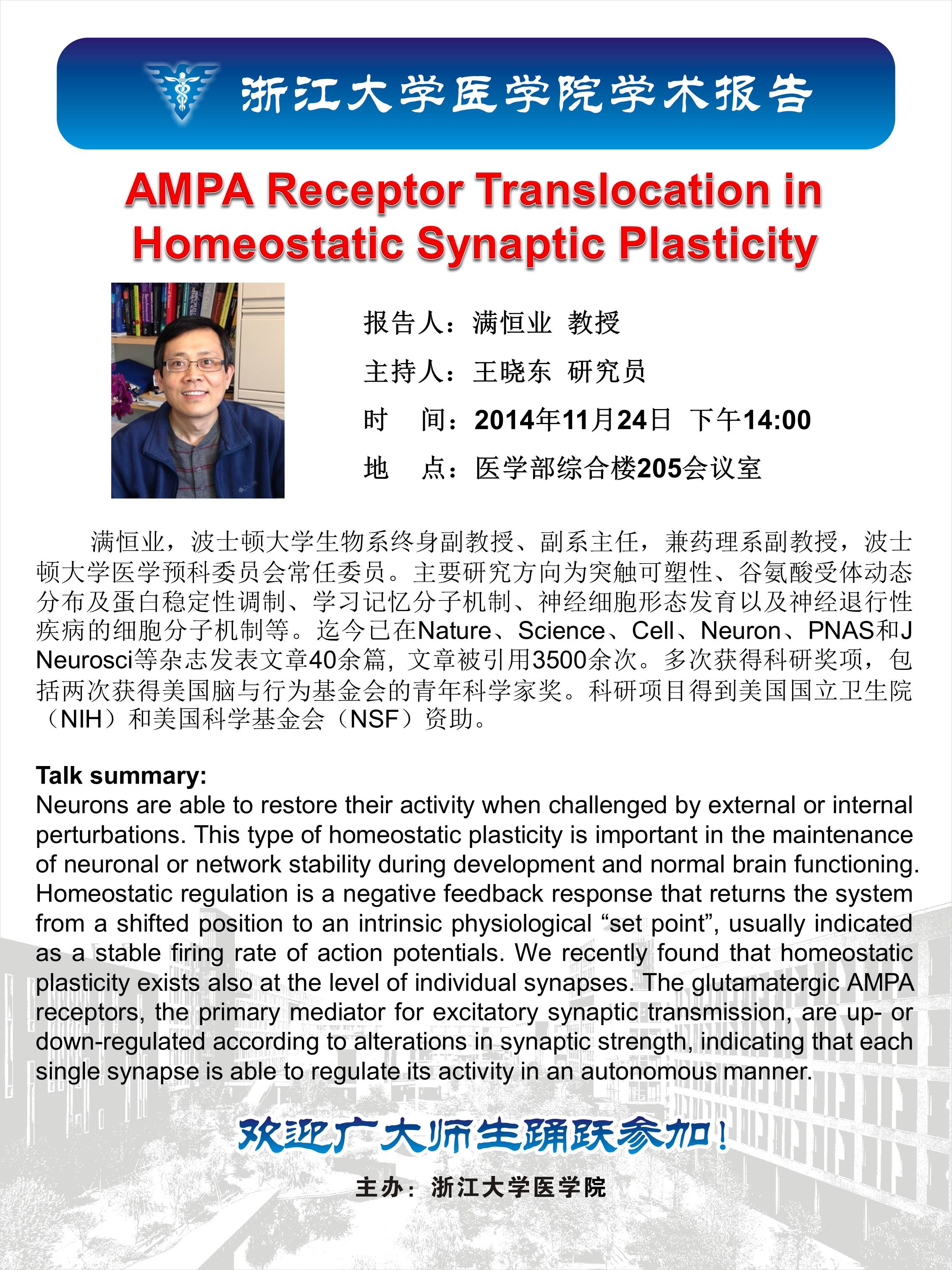满恒业教授 (波士顿大学):AMPA Receptor Translocation in Homeostatic Synaptic Plasticity
报告人:满恒业 教授 (波士顿大学)
主持人:王晓东 研究员
时 间:2014年11月24日 下午14:00
地 点:医学部综合楼205会议室
满恒业,波士顿大学生物系终身副教授、副系主任,兼药理系副教授,波士顿大学医学预科委员会常任委员。主要研究方向为突触可塑性、谷氨酸受体动态分布及蛋白稳定性调制、学习记忆分子机制、神经细胞形态发育以及神经退行性疾病的细胞分子机制等。迄今已在Nature、Science、Cell、Neuron、PNAS和J Neurosci等杂志发表文章40余篇, 文章被引用3500余次。多次获得科研奖项,包括两次获得美国脑与行为基金会的青年科学家奖。科研项目得到美国国立卫生院(NIH)和美国科学基金会(NSF)资助。
Talk summary:
Neurons are able to restore their activity when challenged by external or internal perturbations. This type of homeostatic plasticity is important in the maintenance of neuronal or network stability during development and normal brain functioning. Homeostatic regulation is a negative feedback response that returns the system from a shifted position to an intrinsic physiological “set point”, usually indicated as a stable firing rate of action potentials. We recently found that homeostatic plasticity exists also at the level of individual synapses. The glutamatergic AMPA receptors, the primary mediator for excitatory synaptic transmission, are up- or down-regulated according to alterations in synaptic strength, indicating that each single synapse is able to regulate its activity in an autonomous manner.








